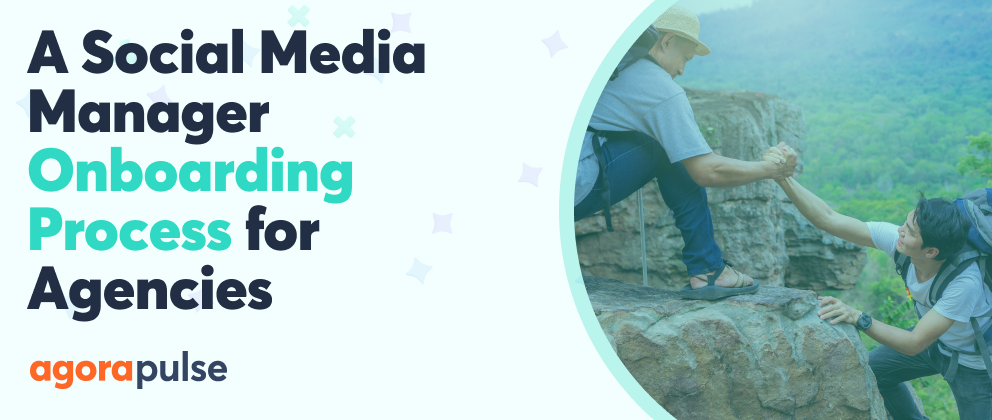How long does it take to onboard a new client?
The average agency client onboarding process takes between 30 to 90 days. This means it typically takes a new client over a month to see the value in your services.
The onboarding process takes as long as it takes. So, there’s probably little you can do to make it quicker. But if you don’t demonstrate value to a new client quickly, within your first few exchanges, you stand to lose that client. Their belief in you, your agency, and the Social Media ROI you can drive will rapidly dwindle. Engagement levels will fall which will trigger increased churn, higher costs, and lower revenue.
A long, drawn-out onboarding process can also damage your reputation, making it difficult to acquire new clients in the future.
Building an effective client onboarding process that maximizes time to value should, therefore, be a top priority.
Time to Value Lessons to Learn From SaaS Companies
There is a direct correlation between the time it takes new customers to see the value in a product or service and their satisfaction, engagement, and loyalty levels.
SaaS organizations are notoriously obsessed with customer onboarding.
Like agencies, SaaS companies also live in a fiercely competitive and cut-throat industry. The difference is that rather than just talk about the value they can offer their clients during the onboarding process, SaaS organizations deliver value to their clients immediately.
They offer things like free trials or product demos (like Agorapulse) or they provide top-notch user experiences, like offering a personalized interface for new sign-ups, for example.
But free trials, demos, and personalized dashboards aren’t things that you, as an agency, can deliver as easily as a SaaS company can.
So, what time to value lessons can we take from SaaS customer onboarding and bring into agency client onboarding?
Use Client Information to Personalize the Onboarding Process & Align on an Individual Level
I’m sure you have a step in your existing client onboarding process that involves gathering client information. Information such as: Who the target audience is, who the competitors are, who your primary contact is, what their preferred method of communication is, what their brand guidelines are, etc.
Aside from using this information to strengthen your relationship and determine initial project boundaries, what do you actually do with this information, once you’ve collected it?
Use it to brief the team ahead of the client kick-off then let it gather dust in your CRM, only to frantically dig it out when the client’s about to jump ship?
SaaS organizations also gather information from their customers during the onboarding process.
But they use this information to immediately implement progressive goals and objectives. They use it to plan ongoing retention strategies. They use it to tailor their service or product offering, and they refer back to it regularly to see if anything’s changed, and if it has, they pivot the strategy accordingly.
The point is: They use the data they collect at the beginning to personalize the onboarding experience and actively demonstrate how they can directly align with each one of their customer’s goals, individually.
The customer not only feels valued, but they can see the value you’re offering, right off the bat.
Reduce Friction and Other Engagement Barriers
FACT: 30% of onboarding processes cause friction.
This friction will raise doubts in your new client’s heads: If it’s already this difficult, just to get things set up, what will it be like working with you long term? Tiresome, is what they’ll be thinking.
Barriers like miscommunication, asking for information with no clarification or context, difficulty getting set up with your internal tools, a limited capacity to answer their questions, and giving them little visibility into the full onboarding process can damage new relationships from the word go.
SaaS companies spend time iterating their onboarding process to make it as friction-free as possible. They map out the onboarding journey for their customers first, so they know what’s about to happen, why it’s happening, and how long it’s likely to take.
They pinpoint standard onboarding obstacles and work hard to remove them, proactively.
They split the process into two or three easy steps by grouping similar tasks together, and they ask the tough questions last.
Offer the Right Value at the Right Time
The agency onboarding process is, typically, a two-way exchange of intelligence between you and the client. But we all know what it’s like to be bombarded with new information, questions, and a ton of admin when we first start using a service or product.
It’s overwhelming and off-putting.
Equally, sporadic communication or complete radio silence is just as fatal.
Your clients need to feel supported and valued—not out-of-the-loop, hassled, or stressed.
There’s a delicate balance between over and under-communicating.
SaaS companies seem to strike this balance well.
They only contact their customers to ask key questions, give progress updates, establish when milestones have been met, and offer helpful advice to speed the onboarding process up, and therefore, maximize time to value. Communication is a methodical and well-thought-through process, so that the customer remains in the loop, not tangled up in the loop.
Track Progress and Continuously Optimize Onboarding Processes
How do you know if something’s working if you don’t track progress and analyze performance?
On the face of it, your clients are going through their onboarding journey, seemingly, with no problems. But how do you know if the process is maximizing their time to value and therefore strengthening their engagement and loyalty with you and your agency?
You’ll only know if they leave, right? And by that time, it’s too late.
SaaS companies are big on collecting data around their customer’s onboarding journey, so they can constantly shorten time to value, increase retention levels, and lower churn.
They often build central dashboards that automatically pull in data as their customers go through the various stages of onboarding. Data that shows you how long each stage takes and where customers drop-off or have issues, can help you to spot unwanted trends, catch bottlenecks, and improve the onboarding journey from start to finish.
Key Takeaways
A good onboarding process that maximizes time to value keeps clients engaged, happy, and loyal.
If clients can experience the true value that your agency offers, from the get-go, it’ll give them a reason to stay with you, sing your praises to others, and keep using your services long-term.
- Collect client information … but use it to plan specific goals and strategies and tailor your services to fit each individual client. Record these strategies and goals in a shared space, so that both you and your clients can transparently track progress, refer back to them on a regular basis, and quickly change direction when external or internal factors change. This will improve time to value by demonstrating your ability to be truly agile. It will make clients feel more understood and valued.
- Be upfront about what the onboarding process will entail. Regularly evaluate it to make it as stress-free as possible. This will maximize time to value because the client will feel part of the process. They’ll know exactly what’s happening, and why, every step of the way. There will be no hidden surprises and they’ll get valuable insight into what it’ll be like working with you in the future. With your client, discuss what’s about to happen, how long it will take, and why these steps are a necessary part of the onboarding journey. Sit with your team and assess each step: Is this step necessary? Is this task bringing you and the client value? Could you group any steps or tasks together to avoid dragging out the process?Use client-friendly tools, like Agorapulse for example, to manage their needs. Agorapulse is a simple to use social media management platform designed to give external clients easy access to things like social content calendars and approval processes etc. Try it for free.
- Strategically plan out your client communication during the onboarding process. Only contact them with key information and questions, or when you’ve reached a big milestone. This will stop information overload and subsequent burnout, which tends to slow the onboarding process down and increase time to value.
- Monitor your clients’ progress through their onboarding journey. Ask for feedback at specific points to uncover friction spots and gather data on clients that drop out, or accounts you lose early on in the relationship. This will allow you to start building a picture of exactly where and how you can improve time to value.
A good onboarding process keeps clients engaged. It helps them realize and experience your agency’s value early on and gives them a reason to stay with you and recommend your services to others.
You’re spending valuable time onboarding. Don’t waste a second with your social media management. Get your free trial of Agorapulse and save money, time, and energy in tackling all your social media needs.






![Feature image of Game-Changing Insights for Agencies in 2024 [Free Ebook] Feature image of Game-Changing Insights for Agencies in 2024 [Free Ebook]](https://static1.agorapulse.com/blog/wp-content/uploads/sites/2/2023/12/Have-Agency-Insights-for-2024-Blogpost-Header-1200x508.jpg)